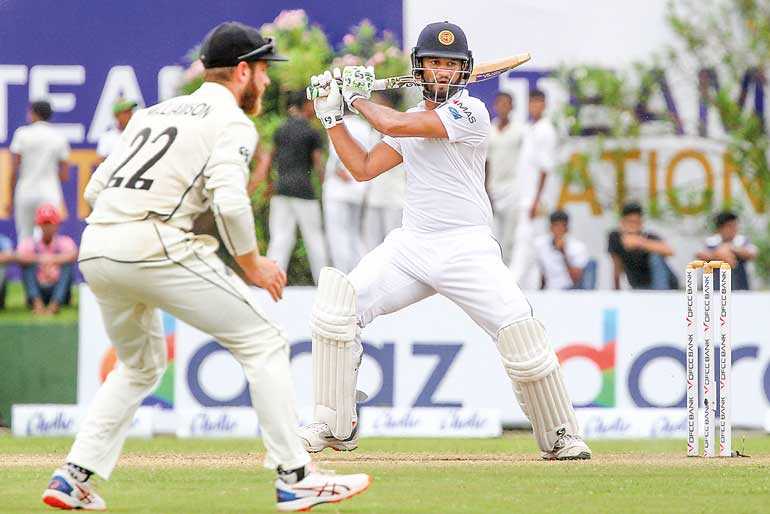Sunday Dec 14, 2025
Sunday Dec 14, 2025
Monday, 19 August 2019 00:21 - - {{hitsCtrl.values.hits}}

ESPNCricinfo: Before his 122 in the fourth innings of this Test, Dimuth Karunaratne had not hit a hundred in over a year. Although the team had won in South Africa earlier this year, he had not personally contributed much during that series. This had grated. So had the fact that in between his last hundred, also at Galle last July, and this Test, he had hit eight half-centuries, but had not been able to convert to a triple-figure score.
This especially being a difficult era for openers – with pitches having become more bowler-friendly around the world – perhaps many would have been satisfied with churning out regular fifties. But Karunaratne is among those players driven by statistics. He has publicly stated that he wants 20-25 hundreds in his career. It was important to him that he broke this drought and got century No. 9 on the board.
"I had gone through quite a few games without a hundred, and I was telling the team that as well – that I haven't scored a hundred in a while, and that I've got to somehow do it in this game," he said after Sri Lanka claimed a six-wicket win in Galle.
"I had that hunger. I try to go for those big scores as much as I can. When I get the opportunity, I really push for that. In the South Africa, New Zealand and Australia tours, I couldn't quite get there, though I came close a few times. So when I got a chance here, in Sri Lanka, I made it happen. That's a great source of confidence for me – to hit a hundred on a tough wicket like this."
As has been the case throughout this Test, the new ball presented the greatest challenge, Karunaratne said – the bounce generated by the spinners in particular, creating wicket opportunities. The Sri Lanka openers, though, negotiated that period without losing a wicket. The 166-run stand between Karunaratne and Lahiru Thirimanne broke the back of the 268-run target.
"I had a positive approach to this innings," Karunaratne said. "We were watching the batsmen that did make runs, and we noted how they went about it. After the ball became a bit softer, it became easier to bat, and then it was a case of using your feet to the spinners. We had a plan to do that, and we knew that whoever got a start needed to go big. Both Thirimanne and I were able to do that. We batted well yesterday, and this morning, we added a good 30 runs to that partnership. We set ourselves little targets and broke the chase down."
On the bowling front, Karunaratne had spoken before the match of preventing the opposition from scoring quickly. England's 3-0 win in Sri Lanka last year had seen the opposition succeed with an aggressive batting strategy – something Sri Lanka were keen to avoid with New Zealand. The tactical approach Sri Lanka adopted for this game was ultimately vindicated, Karunaratne said.
"Keeping New Zealand to around 250 in the first innings was a big thing. We made sure that for the shots that are easy to hit – shots with the spin for example – were covered off by fielders on the boundary. If a bowler bowled a bad ball, we needed that to cost only one run, because that's a big advantage. There was a good chance bowlers would deliver good balls, because the pitch was taking turn, but in the meantime, we needed the bad balls not to cost us. It was really important that we didn't let them get away from us at any stage."
